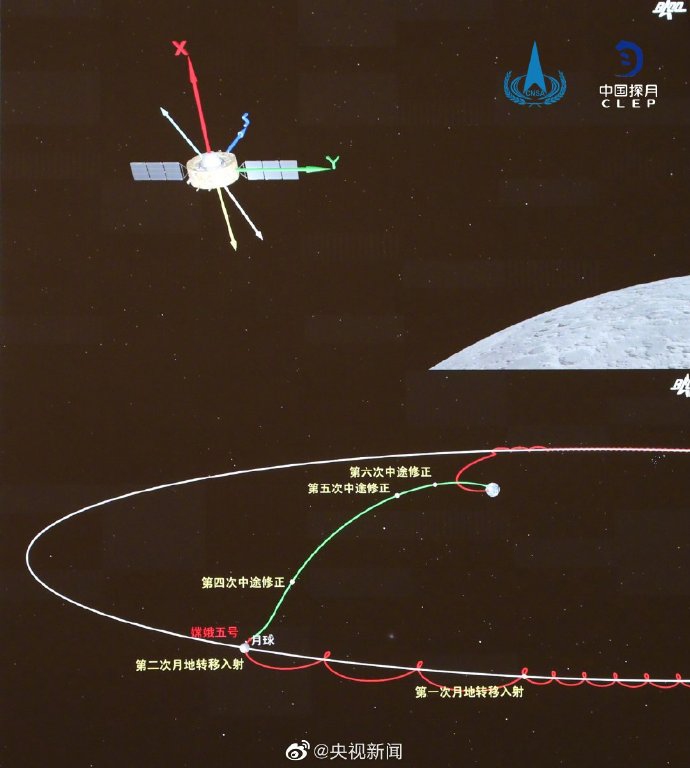


Photo: CNSA
China's Chang'e-5 lunar probe conducted the second lunar-Earth transfer projection on Sunday after seven days travelling around the moon, breaking free from lunar gravitation force and successfully entering lunar-Earth transfer orbit, Global Times learned from the China National Space Administration (CNSA).
At 230 kilometers away from the lunar surface, the orbiter-returner combination broke free from the lunar gravitation force and was sent to the lunar-Earth transfer orbit using four 150-newton thrust engines after 22 minutes of operation, marking another step in making its return to Earth, CNSA revealed.
The probe will conduct mid-course corrections during its journey, before the return capsule separates from the orbiter and heads back to Earth carrying the lunar samples during a suitable time window.
Before Sunday's development, the probe's ascender successfully docked with the orbital module in lunar orbit on December 6, some 380,000 kilometers from the Earth, and completed the first lunar-Earth transfer projection on Saturday, which shifted path from near-circular orbit to a higher elliptical orbit.
China launched the lunar sample return mission of Chang'e-5 on November 24, the third stage of China's current lunar programs, which involves three phases—orbiting, landing and return. The mission, dubbed one of the most complicated and challenging space exploration projects ever attempted by China, is expected to be completed in mid-December and land in North China's Inner Mongolia Autonomous Region.

 Award-winning photos show poverty reduction achievements in NE China's Jilin province
Award-winning photos show poverty reduction achievements in NE China's Jilin province People dance to greet advent of New Year in Ameiqituo Town, Guizhou
People dance to greet advent of New Year in Ameiqituo Town, Guizhou Fire brigade in Shanghai holds group wedding
Fire brigade in Shanghai holds group wedding Tourists enjoy ice sculptures in Datan Town, north China
Tourists enjoy ice sculptures in Datan Town, north China Sunset scenery of Dayan Pagoda in Xi'an
Sunset scenery of Dayan Pagoda in Xi'an Tourists have fun at scenic spot in Nanlong Town, NW China
Tourists have fun at scenic spot in Nanlong Town, NW China Harbin attracts tourists by making best use of ice in winter
Harbin attracts tourists by making best use of ice in winter In pics: FIS Alpine Ski Women's World Cup Slalom
In pics: FIS Alpine Ski Women's World Cup Slalom Black-necked cranes rest at reservoir in Lhunzhub County, Lhasa
Black-necked cranes rest at reservoir in Lhunzhub County, Lhasa China's FAST telescope will be available to foreign scientists in April
China's FAST telescope will be available to foreign scientists in April